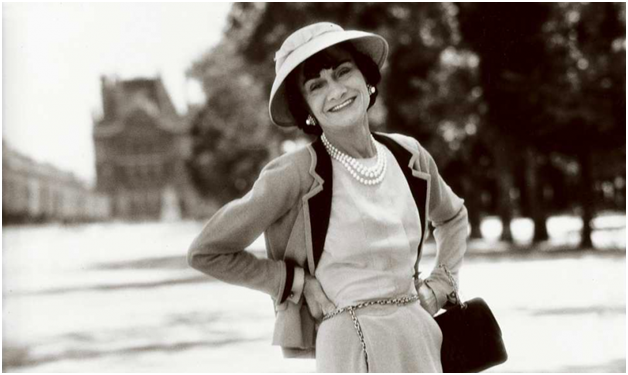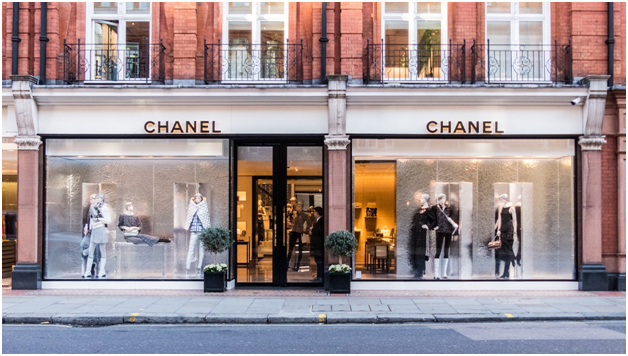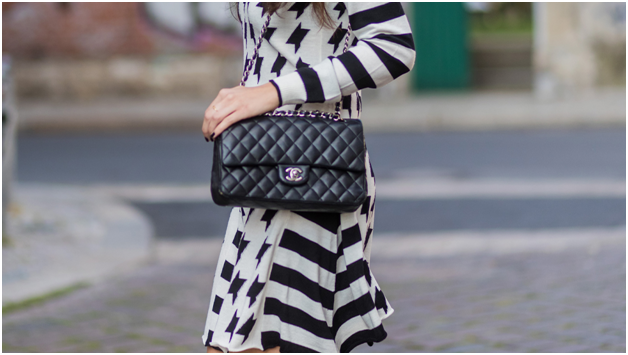From Straw to Gold: Check out this “Marvel’s” rise to becoming a distinguished icon in the luxury fashion world! [Monday: Marketing Marvels]

Miles Everson’s Business Builder Daily speaks to the heart of what great marketers, business leaders, and other professionals need to succeed in advertising, communications, managing their investments, career strategy, and more.
A Note from Miles Everson:
Happy Monday!
We hope you’re enthusiastic about welcoming another awesome week.
Let’s start the day with motivation from our “Marketing Marvels”—outstanding people in the fields of business and marketing. Each Monday, we talk about these world changers and highlight their experiences, contributions, and impact on society.
Are you ready to know who today’s feature is?
Read the article below.
Miles Everson
CEO, MBO Partners
Chairman of the Advisory Board, The I Institute
Marketing Marvels
Have you ever smelled a scent so distinct, so exotic, and yet so familiar that it makes you turn your head towards the person wearing it?
That’s what Chanel N°5 does to many.
As one of the best-selling perfumes in the world, its single bottle consists of a highly complex blend of aldehydes and florals—rose, ylang-ylang, jasmine, lily of the valley, and iris—layered over a warm, woody base of vetiver, sandalwood, vanilla, amber, and patchouli.
Until today, Chanel N°5 is one of the most popular perfume brands. Many fashion icons consider it as the “Celebrity of Perfumes!”
Have you ever thought about the story behind this “liquid gold?”
This perfume’s roots trace back to the humble beginnings of its revolutionary mastermind…

Photo from Lifestyle Asia Hong Kong
Coco Chanel (August 19, 1883 to January 10, 1971) was a French fashion designer who ruled Parisian haute couture for almost 6 decades. Her elegantly casual designs inspired fashion icons to abandon complicated, uncomfortable clothes that were prevalent in the 19th century.
While we now know “Chanel” as not only a person but also an iconic luxury name, the designer’s origins stemmed from melancholy and a grief-stricken childhood.
As a child, she experienced the premature death of her mother, the abandonment of her father, and years under the custody of the Sisters of the Sacred Heart in Aubazine, France. There, she was surrounded by women dressed only in austere clothes.
When Chanel was 17 years old, the nuns got her a job in the convent as a seamstress. She sewed straws to make corsets and petticoats—both used to enhance women’s body figures while wearing a dress.
It’s like the classic Cinderella story!
When Chanel turned 18 years old, she left the convent and started living her own life. She worked as a sales assistant at the Maison Grampayre shop in Moulins, France, and as a singer at various cafés.
This exposure led her to meeting Étienne De Balsan, a prominent fashion executive and son of textile entrepreneurs. De Balsan eventually became Chanel’s romantic partner and also served as her financier.
Chanel’s exceptional talent for creating hats and dresses captured the attention of people in De Balsan’s company. Her masterpieces became highly sought after, pushing her to open her first shop.
Her quick rise to prominence was due to the contrasting nature of her designs to the popular fashion at that time. This marked the beginning of a new trend in a new century.
The Rise of CHANEL, the Luxury Brand
As Chanel (the designer) continued to build an empire in the fashion industry, she stayed faithful to her maxim that “luxury must be comfortable, otherwise it’s not luxury.” That’s why when she established CHANEL (the company), her designs emphasized simplicity and comfort.

Photo from The Business of Fashion
In the late 1920s, CHANEL was reportedly worth millions of dollars and employed over 2,000 workers in its couture house, perfume laboratory, textile mill, and jewelry workshop.
Here are some of the company’s product innovations that deeply affected modern life and fashion:
- Popularizing wearing black for various occasions. Before Chanel incorporated black into her hats and dresses, the color was simply reserved for servants and funerals.
However, being the “fashion rebel” that she was, Chanel redefined black and used it to symbolize elegance and style. There were speculations she was inspired by the nuns’ attire at the Sisters of the Sacred Heart.
- Removing the corset and petticoat from women’s daily attire. A hundred years ago, women suffocated themselves to cinch their waists and look as presentable as they could be. Chanel lived through this and realized it wasn’t healthy.
Although couturier Jean Patou was the first one to make a dress without a corset, Chanel was the one who popularized the new attire. That’s why in fashion, it’s often said that Chanel “liberated” women.
- Inventing the “Little Black Dress.” Long ago, women’s dresses were always lengthy and balloon-y—similar to the classic Disney princesses’ clothes. Chanel understood the discomfort these attires caused, thereby creating and popularizing fitting dresses.
Thanks to her innovations, uncomfortable frills, laces, corsets, and petticoats are now removed from women’s clothing!
- Using jersey fabric. Chanel brought jersey fabric from men’s athletic wear to modern high fashion. This was often considered her biggest innovation because she used the fabric to create comfortable cardigans, winter dresses, sweatshirts, and baby clothes.
- Inventing the hands-free bag. Chanel also invented the hands-free sling bag to further free women from the hassles of being “tied down” physically. Her iconic 2.55 CHANEL bag was the first of its kind to allow women to go about their day without worrying about holding their bags.

Photo from Marie Claire
If there’s something you can learn from the success of Chanel and her brand, it’s that you should find a sustainable way to differentiate your brand.
The fashion designer did an excellent job in making her business stand out and her offerings sustainable in the long term. Over 100 years later, her company is still stronger than ever and her products are a staple in the luxury industry.
What’s more?
Chanel didn’t only establish a new brand but also revolutionized fashion! Her masterpieces were functional, aesthetically pleasing, and more importantly, comfortable to wear.
Another lesson you can learn from Chanel and her business’ success is you have to leverage the power of storytelling. This strategy enchants customers and makes them want to be part of the entire brand experience.
For example: The Chanel N°5 perfume…
Prior to the creation of the fragrance, Chanel wanted to revolutionize the way women smell. She wanted something that would liberate the feminine spirit.
During her time, this was a big deal because fragrances women wore fell only under 2 categories: The “respectable women” and “sexually provocative women.” That’s why Chanel looked for a new, unique scent that would create a category in the middle.
With Chanel N°5, the fashion designer’s marketing was a success! The perfume gave women a mysterious, peculiar sensation that created an experience other than just smelling well. The fragrance also became a symbol of women who aren’t provocatively sexy but elegantly sexy.
Additionally, the company has been using powerful storytelling as a weapon to increase its visibility on social media for the past few years.
The brand’s social media posts are calculated—they don’t “hard sell.” They simply use a lot of storytelling to power the CHANEL experience.
—
As a distinguished icon in the fashion industry, Chanel lived her life to the fullest, having changed international fashion and the concept of dressing the female body.
Even when she’s already passed, her shrewd understanding of women’s needs, enterprising ambition, and other aspects of her life continue to inspire numerous biographical books, films, and plays, including the 1970 Broadway musical, “Coco.”
Last but not the least?
Her rise from rags to riches and creative genius continue to propel CHANEL (the company) forward, creating stylistic codes of contemporary fashion while staying true to the designer’s original vision.
We hope you learned a lot from Chanel’s entrepreneurial saga and the success of her brand!
With a mindset, passion, and strategies similar to Chanel, you can also make a difference not just in the industry you’re in but also in the lives of your target market.
Have a great start to the week!
(This article is from The Business Builder Daily, a newsletter by The I Institute in collaboration with MBO Partners.)
About The Dynamic Marketing Communiqué’s
“Monday Marketing Marvels”
Too often, industry experts and the marketing press sing the praises of some brand or company’s marketing strategy.
… only for the audience to later find out that its product was a flop, or worse, that the brand or company went bankrupt.
The true ROI in marketing can’t be separated from the business as a whole.
What good is a marketing case study if one can’t prove that the company’s efforts actually paid off?
At the end of the day, either the entire business is successful or it isn’t. And the roles of marketing and communication are always paramount to that success.
Every Monday, we publish a case study that highlights the world’s greatest marketing strategies, marketers, and communicators.
However, the difference between our articles and the numerous ones out there is that we will always make certain that the firm really did generate and demonstrate earning power worthy of study in the first place (compliments of Valens Research’s finance group) in keeping with a person’s leadership skills in the area of marketing and/or communication.
We’ll also study the greatest marketing fails and analyze what they did wrong, or what they needed to improve. We all make our mistakes, but better we learn from others’ mistakes—and earlier, rather than later.
Hope you found this week’s marketing marvel interesting and helpful.
Stay tuned for next week’s Monday Marketing Marvels!
Cheers,
Kyle Yu
Head of Marketing
Valens Dynamic Marketing Capabilities
Powered by Valens Research
www.valens-research.com




